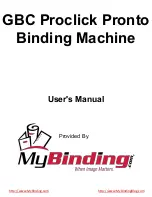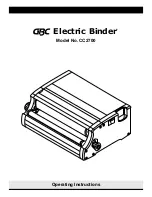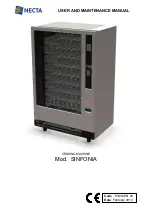
Input/output setting mode
63 DAD
When the input signal (DAD) is turned ON, the down counter will increment by one.
64 DDC
When the input signal (DDC) is turned ON, the down counter will decrement by one.
[15]-7
(4) Output signal setting table
Serial
No.
Function
Specifications
1...16 OT0...OTF
When the input signal (IO0) that outputs to the virtual output 0 is turned ON, the
virtual output signal (OT0) will turn ON at any time.
(Same for OT1 to OTF)
17...24 FN1...FN8
When the pattern data function code 1 data (FNC1) is read in during sewing, the
function code 1 output signal (FN1) will be reversed <<ON/OFF>>
* When function code 1 data (FNC1) is read in at an odd number:
[The function code 1 output signal (FN1) will turn <<ON>>.]
* When function code 1 data (FNC1) is read in at an even number:
[The function code 1 output signal (FN1) will turn <<OFF>>.]
(Same for FN2 to FN8)
25...32 OF1...OF8
When the work holder input signal 1 (IF1) is turned ON, the work holder output
signal 1 (OF1) will turn ON. When the work holder input signal 1 (IF1) is turned ON,
the work holder output signal 1 (OF1) will turn OFF.
(Same for OF2 to OF8)
33 NO
Nothing is output.
34 T
The thread trimming output signal will turn [ON/OFF].
35 L
The thread release output signal will turn [ON/OFF].
36 W
The wiper output signal will turn [ON/OFF].
37 PF
The presser bar lifting output signal will turn [ON/OFF].
38 AFL
When the pneumatic type two stage work holder input signal (A2F) is turned ON
[first time], the pneumatic type two stage work holder low pressure output (AFL) will
turn ON. Note that this is valid when the [pneumatic type two stage work holder
setting (AF2)] in the [G] mode is set to [ON].
39 AFH
When the pneumatic type two stage work holder input signal (A2F) is turned ON
[second time], the pneumatic type two stage work holder high pressure output
(AFH) will turn ON. Note that this is valid when the [pneumatic type two stage work
holder setting (AF2)] in the [G] mode is set to [ON].
40 AFE
When the pneumatic type two stage work holder input signal (A2F) is turned ON
[second time], the pneumatic type two stage work holder excess work holder
release output (AFE) will turn ON. Note that this is valid when the [pneumatic type
two stage work holder setting (AF2)] in the [G] mode is set to [ON].
41 DHP
The home position output signal (DHP) will turn ON when the sewing machine is
stopped at the home position.
[Note that this will turn on at the virtual home position instead of the mechanical
home position when free home position or home position correction is executed.]
42 D2H
The secondary home position output signal (D2H) will turn ON when the sewing
machine is stopped at the secondary home position.
43 RED
If the sewing machine can be driven (the work holder is lowered (ON)), when the
start switch is pressed, the READY output signal (RED) will turn ON.
44 DSW
When the sewing machine is stitching (including feed data), the during stitching
signal (DSW) will turn ON.
45 SP
When the sewing machine starts to rotate after feed data the output signal (SP) will
turn ON.
46 TSE
The thread trimming start output signal (TSE) will turn ON when the thread trimming
operation starts.
47 END
The stitching end output signal (END) will turn ON when one stitching pattern is
completed.
48 DCS
When the sewing machine is halted with the HALT code data (UST, DST) during
stitching, the HALT (code) output signal (DCS) will turn ON.
49 DST
The halted output signal (DST) will turn ON while the sewing machine is halted.
50 HPO
The during home return output signal (HPO) will turn ON while the sewing machine
is returning to the home position.
Summary of Contents for PLK-E Series
Page 2: ......
Page 13: ...Explanations of basic screens keys and operations 3 6...
Page 15: ...Stitching data type and writing No 4 1...
Page 21: ...Reading writing and erasing data floppy disk 5 5...
Page 26: ...Reading writing and erasing data internal memory 6 4...
Page 28: ...7 1...
Page 35: ...Creating simple stitching data 8 6...
Page 39: ...Methods of creating stitching data 9 3...
Page 44: ...Methods of creating stitching data 9 7...
Page 54: ...Methods of creating stitching data 9 15...
Page 58: ...Methods of creating stitching data 9 22...
Page 63: ...Methods of creating stitching data 9 26...
Page 68: ...Methods of creating stitching data 9 30...
Page 72: ...Methods of creating stitching data 9 33...
Page 75: ...Methods of creating stitching data 9 35...
Page 79: ...Methods of creating stitching data 9 38...
Page 86: ...Modification mode 12 5...
Page 89: ...Modification mode 12 7...
Page 94: ...Modification mode 12 11...
Page 99: ...Modification mode 12 15...
Page 104: ...Modification mode 12 19...
Page 111: ...Modification mode 12 25...
Page 115: ...Modification mode 12 28...
Page 122: ...Modification mode 12 34...
Page 126: ...Modification mode 12 37...
Page 133: ...Modification mode 12 43...
Page 138: ...Modification mode 12 47...
Page 143: ...Modification mode 12 51...
Page 148: ...Modification mode 12 55...
Page 155: ...Data conversion mode 13 6...
Page 158: ...Data conversion mode 13 8...
Page 162: ...Data conversion mode 13 11...
Page 166: ...Data conversion mode 13 14...
Page 169: ...Data conversion mode 13 16...
Page 179: ...Data conversion mode 13 25...
Page 204: ...Program mode 16 5...
Page 205: ...Program mode 16 6...
Page 208: ...Program mode list 17 2...
















































